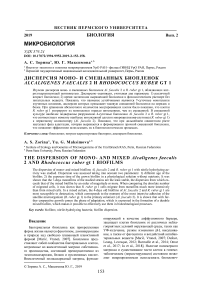Дисперсия моно- и смешанных биопленок Alcaligenes faecalis 2 и Rhodococcus ruber GT 1
Автор: Зорина Анастасия Сергеевна, Максимова Юлия Геннадьевна
Журнал: Вестник Пермского университета. Серия: Биология @vestnik-psu-bio
Рубрика: Микробиология
Статья в выпуске: 2, 2019 года.
Бесплатный доступ
Изучена дисперсия моно- и смешанных биопленок Al. faecalis 2 и R. ruber gt 1, обладающих нитрилгидролизующей активностью. Дисперсию оценивали, учитывая два параметра: 1) различный возраст биопленки; 2) время экспозиции выращенной биопленки в физиологическом растворе без питательных веществ. Показано, что наименее устойчивыми являются 7-суточные монопленки изученных штаммов, дисперсия которых превышает таковую смешанной биопленки на порядок и более. При сравнении абсолютного количества мигрировавших клеток было показано, что клетки R. ruber gt 1 мигрируют из монопленки гораздо интенсивнее, чем из смешанной. В смешанной культуре наиболее подвержены разрушению 4-суточные биопленки Al. faecalis 2 и R. ruber gt 1, что соответствует моменту наиболее интенсивной адгезии микроорганизма-спутника (R. ruber gt 1) к первичному колонизатору (Al. faecalis 2). Показано, что при дальнейшем совместном росте наступает фаза адаптации, которая выражается в формировании прочной смешанной биопленки, что позволяет эффективно использовать их в биотехнологических процессах.
Биопленки, нитрилгидролизующие бактерии, дисперсия биопленки
Короткий адрес: https://sciup.org/147227076
IDR: 147227076 | УДК: 579.24 | DOI: 10.17072/1994-9952-2019-2-153-158
Текст научной статьи Дисперсия моно- и смешанных биопленок Alcaligenes faecalis 2 и Rhodococcus ruber GT 1
Бактериальная биопленка как прикрепленная форма жизни является фенотипом, доминирующим в природе над свободно плавающей планктонной формой [Marić, Vraneš, 2007]. Биопленки представляют собой сообщества бактериальных клеток, встроенные во внеклеточный матрикс собственного производства, состоящий преимущественно из экзополисахаридов, белков и нуклеиновых кислот. Внеклеточный полисахаридный матрикс, функци- онирующий в качестве диффузионного барьера, защищает клетки биопленок от различных неблагоприятных условий окружающей среды, таких как УФ-излучение, резкие изменения рН, высушивание, а также от фагоцитоза и воздействий антибактериальных веществ [Marić, Vraneš, 2007; Dufour, Leung, Levesque, 2012; Burmølle et al., 2014; Omar et al., 2017; Ju et al., 2018]. Наличие полимерного матрикса и существование части клеток в гипоме-таболическом (персистирующем) состоянии позволяет микроорганизмам использовать биопленоч-
ную форму жизни как стратегию развития в неблагоприятных условиях окружающей среды, в том числе в условиях стресса.
В естественной среде обитания подавляющее большинство биопленок содержит несколько видов бактерий, а также грибы, водоросли и простейшие [Burmølle et al., 2014]. Мультивидовые биопленки имеют преимущества как перед планктонными клетками, так и перед моновидовыми биопленками. При наличии нескольких видов в биопленке усиливаются ее защитные эффекты. Ряд авторов отмечают, что клетки в мультивидовой биопленке более устойчивы к антибактериальным препаратам и химическому стрессу [Burmølle et al., 2014; Røder et al., 2015; Chen, Zhao., Doyle, 2015]. Более того, благодаря физико-химическим свойствам матрикса и его функционированию в качестве диффузионного барьера, в биопленке могут сосуществовать различающиеся по метаболизму бактерии, в том числе аэробы и анаэробы, нитрифика-торы и денитрификаторы, что делает мультивидо-вые биопленки перспективными для использования в многостадийной конверсии веществ и при очистке сточных вод.
Биопленки давно используются в биокатализе и биологической очистке. В частности, они участвуют в производстве химических веществ, процессах биоремедиации и в очистке сточных вод, применяются для улучшения качества воды и создания возобновляемых ресурсов [Dufour, Leung, Levesque, 2012; Максимова, 2013; Rittmann, 2018; Carrel et al., 2018; Thornhill, Kumar, 2018]. Муль-тивидовые биопленки нашли наибольшее применение в процессах очистки сточных вод на очистных сооружениях.
Известно, что миграция клеток и отрыв целых фрагментов от биопленки являются критическим моментом в развитии биопленочных систем. Этот процесс приводит к распространению микроорганизмов, оказывает вредное воздействие на производственные системы и качество получаемого продукта, а также степень биообрастания и производительность [Derlon et al., 2013]. Существует как минимум три способа выхода бактерий из состава биопленки: десорбция, отслоение и дисперсия [Petrova, Sauer, 2016]. Первый способ – десорбция, которая для налаженных производственных систем не играет значительной роли в разрушении биопленки, так как наблюдается на ранних этапах ее развития и влияет на первоначальную адгезию клеток к поверхности.
Вторым способом выхода клеток из биопленки является отслоение, которое зависит главным образом от влияния движущейся жидкости, контактирующей с поверхностью биопленки. К отслоению относят два процесса: эрозию и истирание. Эрозия – это обусловленный физическими силами непрерывный процесс потери отдельных клеток или их небольших скоплений, который затрагивает всю поверхность биопленки [Derlon et al., 2013;
Walter et al., 2013; Petrova, Sauer, 2016]. Истирание – это высвобождение клеток из биопленки в результате столкновений с частицами на поверхности биопленки [Walter et al., 2013; Petrova, Sauer, 2016]. Таким образом, отслоению подвержены клетки, находящиеся ближе всего к поверхности биопленки.
Процесс дисперсии – третий способ высвобождения клеток из биопленки – характеризуется не только миграцией клеток в результате влияния факторов окружающей среды, но и активным фенотипическим переключением, которое обеспечивает физиологические изменения, способствующие высвобождению клеток из сообществ биопленок [Petrova, Sauer, 2016]. При активном росте биопленки увеличивается ее толщина и плотность, и, как следствие, питательные вещества и другие необходимые для жизни бактериальных клеток компоненты поступают в толщу биопленки в недостаточном количестве, в результате чего клетки в слоях биопленки, которые находятся далеко от границы раздела фаз, могут испытывать голод, а также стресс при синтезе токсичных продуктов. Чувство кворума дает бактериям способность распознавать плотность биопленки и регулировать ее благодаря синтезу разрушающих матрикс ферментов, что является отличием дисперсии от пассивного процесса отслоения.
На миграцию клеток из зрелой биопленки влияют такие параметры, как морфология биопленки, ее шероховатость, пористость, плотность, площадь поверхности; чувство кворума и действие ферментов, локализованных в экзополисахаридном матриксе; деградация матрицы биопленки химическими средствами и внешние физические воздействия окружающей среды [Paul et al., 2012; Walter et al., 2013; Solano, Echeverz, Lasa, 2014; Desmond et al., 2018]. Все эти факторы запускают механизм дисперсии для перемещения бактерий в места с благоприятными условиями окружающей среды и их колонизации. Дисперсия биопленки может оказывать как негативное влияние на процессы, основанные на биопленочных системах, так и являться важным фактором регулирования старения биопленки, от которого зависит эффективность всей системы. Поэтому для управления промышленными процессами, в которых используются биопленки бактерий, необходимы знания о миграции клеток из биопленки.
В данной работе мы изучали дисперсию моно-и смешанных биопленок Al. faecalis 2 и R. ruber gt 1, обладающих нитрилгидролизующей активностью. Эти штаммы могут быть использованы как в процессах биокатализа для получения акриламида из акрилонитрила (R. ruber gt 1) и акриловой кислоты из акриламида (Al. faecalis 2), так и в процессах очистки сточных вод от нитрилов. Смешанные биопленки этих штаммов осуществляют полную минерализацию нитрилов, и на их основе может быть сконструирован биофильтр. В этом случае изучение процесса дисперсии биопленок необходимо для разработки эффективного процесса. В связи с этим целью исследования явилось изучение дисперсии моно- и смешанных биопленок Al. faecalis 2 и R. ruber gt 1 на различных стадиях роста и оценка стабильности сформированной биопленки в отсутствие питательного субстрата.
Материалы и методы исследования
Объекты исследования и условия культивирования
Штаммы: Al. faecalis 2, обладающий выраженной амидазной активностью, и R. ruber gt 1 с высокой нитрилгидратазной активностью, были выделены и селекционированы в лаборатории молекулярной микробиологии и биотехнологии ИЭГМ УрО РАН. Культуры бактерий выращивали в колбах объемом 50 мл на шейкере со скоростью вращения 120 об/мин при 30°С на минимальной солевой среде N следующего состава (г/л): КН 2 РО 4 – 1.0, К 2 НРО 4 · 3Н 2 О – 3.7, NaCl – 0.5, MgSO 4 ∙ 7Н 2 О – 0.5, FeSO 4 ∙ 7Н 2 О – 0.005, CoCl 2 ∙ 6Н 2 О – 0.01, рН 7.2–7.4. В качестве источника углерода для R. ruber gt 1 использовали глюкозу в концентрации 0.1%, в качестве источника азота – 0.01 М NH 4 Cl. Для Al. faecalis 2 в качестве источника углерода и азота использовали 0.1 М ацетамид. При выращивании смешанной культуры и бинарной биопленки Al. faecalis 2 и R. ruber gt 1 в минеральную среду вносили глюкозу в концентрации 0.1%, 0.1 М ацетамид и 0.01 М NH 4 Cl .
Рост бактерий в биопленках и определение количества мигрировавших клеток
В лунки полистерольного плоскодонного 96-луночного планшета (Медполимер, Санкт-Петербург, Россия) вносили 150 мкл синтетической минеральной среды N и инокулировали 10 мкл суспензии нитрилутилизирующих бактерий, содержащей (2.0±0.2) ∙ 108 КОЕ/мл. Планшеты культивировали в термостате при 30ºС в течение 1–7 сут.
Миграцию клеток оценивали, учитывая два параметра: 1) различный возраст биопленки; 2) время экспозиции выращенной биопленки в физиологическом растворе без питательных веществ. Для этого планктонные клетки удаляли из лунок декантацией, биопленку отмывали от среды культивирования 200 мкл калий-фосфатного буфера дважды и добавляли 200 мкл 0.9% NaCl. Высев клеток проводили сразу (0 день) и через определенное количество суток.
Количество жизнеспособных клеток (число КОЕ) определяли при высеве на плотную агаризо-ванную среду LB сразу же, через 1, 2 и 5 сут.
Статистическую обработку проводили с использованием t-критерия Стьюдента, различия считали значимыми при p < 0.05.
Результаты и их обсуждение
Анализ дисперсии клеток Al. faecalis 2 из 1-суточной моновидовой биопленки показал, что наибольшее количество мигрировавших клеток наблюдается через сутки в условиях голодания по субстрату и составляет в среднем 5.94∙107 КОЕ/мл (рис. 1). На второй и пятый дни в физиологиче- ском растворе планктонных клеток в среде становится меньше. Это связано с процессами сорб-ции/десорбции клеток; кроме того, так как учитывались только жизнеспособные клетки, это может быть связано с гибелью клеток в отсутствие питательного субстрата. Клетки Al. faecalis 2 подвижны, и на первоначальном этапе формирования биопленки активно переходят из планктонного состояния в биопленку и обратно. Наибольшее количество мигрировавших клеток из 4-суточной биопленки наблюдается во второй день в среде без пи- тательных веществ.
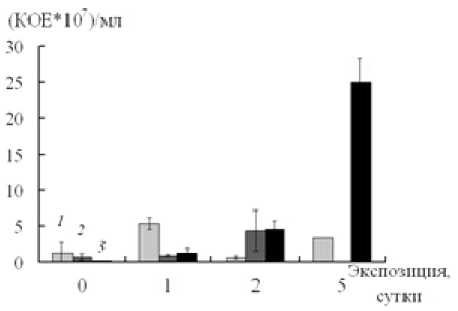
Рис. 1 . Дисперсия клеток Al. faecalis 2 из моновидовой биопленки:
1 – 1-суточная биопленка, 2 – 4-суточная биопленка, 3 – 7-суточная биопленка
Количество мигрировавших клеток Al. faecalis 2 из 7-суточной моновидовой биопленки в среде без питательных веществ каждый день увеличивается, и наибольшее количество мигрировавших клеток наблюдается в пятый день хранения и составляет в среднем 2.5∙108 КОЕ/мл. При этом количество мигрировавших клеток на 5-е сут. в 4.3 и 3.9 раза больше клеток, мигрировавших на 1 день экспозиции 1-суточной биопленки и на второй день экспозиции 4-суточной биопленки в физиологическом растворе соответственно. Это может говорить как о разной массивности биопленки, так и о том, что с началом дисперсии в биопленке запускаются процессы, в результате которых клетки переходят в планктонное состояние более интенсивно. Таким образом, наименее устойчивой среди изученных является 7-суточная монопленка алкалигенеса, дисперсия клеток из которой максимальна на 5-е сут.
Анализ дисперсии клеток R. ruber gt 1 из моновидовой биопленки показал, что для 1-суточной биопленки ярко выраженной зависимости количества мигрировавших клеток от времени экспозиции в физиологическом растворе не наблюдается (рис. 2). Наибольшее количество мигрировавших клеток из 4-суточной биопленки наблюдается на 5е сут. в физиологическом растворе и составляет 2.80∙106 КОЕ/мл. По-видимому, на 4-е сут. культивирования клетки успевают образовать достаточно прочную биопленку, которая подвергается дисперсии только на 5-е сут.
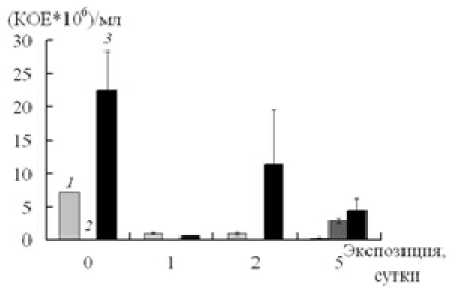
Рис. 2 . Дисперсия клеток R. ruber gt 1 из моновидовой биопленки:
1 – 1-суточная биопленка, 2 – 4-суточная биопленка, 3 – 7-суточная биопленка
Анализ дисперсии клеток Al. faecalis 2 (рис. 3) и R. ruber gt 1 (рис. 4) из смешанной биопленки показал, что количество мигрировавших клеток и алкалигенеса, и родококка в 1-суточной и 4-суточной смешанной биопленке возрастает с каждым последующим днем в среде без питательных веществ и имеет наибольшее значение на пятый день.
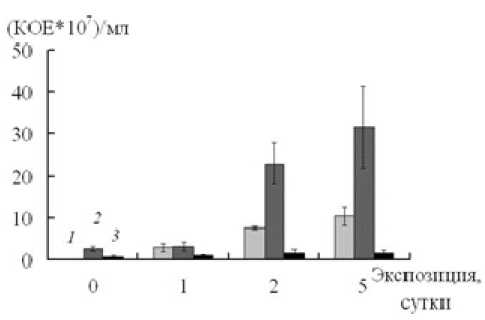
Рис. 3 . Дисперсия клеток Al. faecalis 2 из смешанной биопленки:
1 – 1-суточная биопленка, 2 – 4-суточная биопленка, 3 – 7-суточная биопленка
Для штамма Al. faecalis 2 эти данные соответствуют дисперсии клеток в 7-суточной монокультуре. В 7-суточной смешанной биопленке дисперсия Al. faecalis 2 менее выражена, что подтверждается постоянным количеством КОЕ алкалигенеса в течение всех пяти дней в физиологическом растворе. В то же время, миграция клеток R. ruber gt 1 из смешанной 7-суточной биопленки уменьшается со временем экспозиции в физиологическом раство-
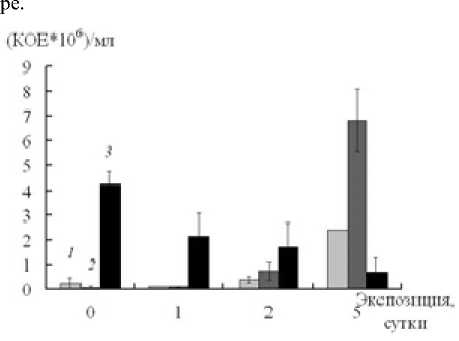
Рис. 4 . Дисперсия клеток R. ruber gt 1 из смешанной биопленки:
1 – 1-суточная биопленка, 2 – 4-суточная биопленка, 3 – 7-суточная биопленка
Таким образом, наименее устойчивыми среди изученных моновидовых биопленок являются 7-суточные монопленки. Однако в смешанной культуре наиболее подвержены разрушению 4-суточные биопленки Al. faecalis 2 и R. ruber gt 1. Эксперименты, проведенные ранее [Зорина, Максимова, Демаков, 2019], показали, что именно на 4-е сут. формирования смешанной биопленки родококк присоединяется к первичному колонизатору – алкалигенесу, что связано с максимумом роста биопленки родококка [Максимова, Максимов, Демаков, 2015]. Можно предположить, что в момент наиболее интенсивной адгезии клеток вто- рого штамма дисперсия биопленки первичного колонизатора возрастает. Интересно, что в условиях голодания по субстрату 7-суточная смешанная биопленка гораздо более стабильна, чем биопленки монокультур. В целом, дисперсия R. ruber gt 1 из монопленки более выражена и превышает таковую из смешанной биопленки на порядок и более. Внеклеточный полимерный матрикс Al. faecalis 2 способствует формированию более прочной биопленки R. ruber gt 1, а биопленка Al. faecalis 2 оказывается более стабильной, когда формируется в присутствии R. ruber gt 1.
Заключение
Таким образом, разрушение смешанной биопленки менее выражено, при этом наиболее уязвимым моментом для первичного колонизатора является адгезия и формирование биопленки вторым штаммом – микроорганизмом-спутником. При дальнейшем совместном росте наступает фаза адаптации, которая выражается в формировании прочной смешанной биопленки. Следовательно, использование смешанных биопленок в биотехно- логических процессах (биокатализе и очистке окружающей среды) более эффективно не только для выполнения многошаговых ферментативных реакций, но и для повышения прочности биопленки-биокатализатора.
Работа выполнена в рамках государственного задания, номер госрегистрации темы 01201353249.
Список литературы Дисперсия моно- и смешанных биопленок Alcaligenes faecalis 2 и Rhodococcus ruber GT 1
- Зорина А.С., Максимова Ю.Г., Демаков В.А. Биопленкообразование моно- и смешанных культур штаммов Alcaligenes faecalis 2 и Rhodococcus ruber gt 1 // Микробиология. 2019. Т. 88, № 2. С. 175-183.
- Максимова Ю.Г., Максимов А.Ю., Демаков В.А. Биопленки нитрилгидролизующих бактерий: динамика роста, устойчивость к токсичным веществам и биотехнологический потенциал // Биотехнология. 2015. № 4. С. 39-51.
- Максимова Ю.Г. Микробные биопленки в биотехнологических процессах // Биотехнология. 2013. № 4. С. 9-23.
- Burmølle M. et al. Interactions in multispecies biofilms: do they actually matter // Trends in Microbiology. 2014. Vol. 22, № 2. P. 84-91.
- Carrel M. et al. Biofilms in 3D porous media: Delineating the influence of the pore network geometry, flow and mass transfer on biofilm development // Water Research. 2018. Vol. 134. P. 280-291.
- Chen D., Zhao T., Doyle M.P. Single- and mixed-species biofilm formation by Escherichia coli O157:H7 and Salmonella, and their sensitivity to levulinic acid plus sodium dodecyl sulfate // Food Control. 2015. Vol. 57. P. 48-53.
- Chen J. et al. Microbial transformation of nitriles to high-value acids or amides // Advances in Biochemical Engineering / Biotechnology. 2009. Vol. 113. P. 33-77.
- Derlon N. et al. Growth limiting conditions and denitrification govern extent and frequency of volume detachment of biofilms // Chemical Engineering Journal. 2013. Vol. 218. P. 368-375.
- Desmond P. et al. Stratification in the physical structure and cohesion of membrane biofilms - Implications for hydraulic resistance //Journal of Membrane Science. 2018. Vol. 564. P. 897-904.
- Dufour D., Leung V., Levesque C.M. Bacterial biofilm: structure, function, and antimicrobial resistance // Endodontic Topics. 2012. Vol. 22. P. 2-16.
- Ju X. et al. Effect of the luxS gene on biofilm formation and antibiotic resistance by Salmonella serovar Dublin // Food Research International. 2018. Vol. 107. P. 385-393.
- Marić S., Vraneš J. Characteristics and significance of microbial biofilm formation // Periodicum Biologorum. 2007. Vol. 109, № 2. P. 1-7.
- Omar A. et al. Microbial biofilms and chronic wounds // Microorganisms. 2017. Vol. 5. P. 1-15.
- Paul E.et al. Effect of shear stress and growth conditions on detachment and physical properties of biofilms // Water Research. 2012. Vol. 46. P. 5499-5508.
- Petrova O.E., Sauer K. Escaping the biofilm in more than one way: desorption, detachment or dispersion // Current Opinion in Microbiology. 2016. Vol. 30. P. 67-78.
- Rittmann B.E. Biofilms, active substrata, and me // Water Research. 2018. Vol. 132. P. 135-145.
- Røder H.L. et al. Interspecies interactions result in enhanced biofilm formation by co-cultures of bacteria isolated from a food processing environment // Food Microbiology. 2015. Vol. 51. P. 18-24
- Solano C., Echeverz M., Lasa I. Biofilm dispersion and quorum sensing // Current Opinion in Microbiology. 2014. Vol. 18. P. 96-104.
- Thornhill S.G., Kumar M. Biological filters and their use in potable water filtration systems in space-flight conditions // Life Sciences in Space Research. 2018. Vol. 17. P. 40-43.
- Walter M. et al. Detachment characteristics of a mixed culture biofilm using particle size analysis // Chemical Engineering Journal. 2013. Vol. 228. P. 1140-1147.

